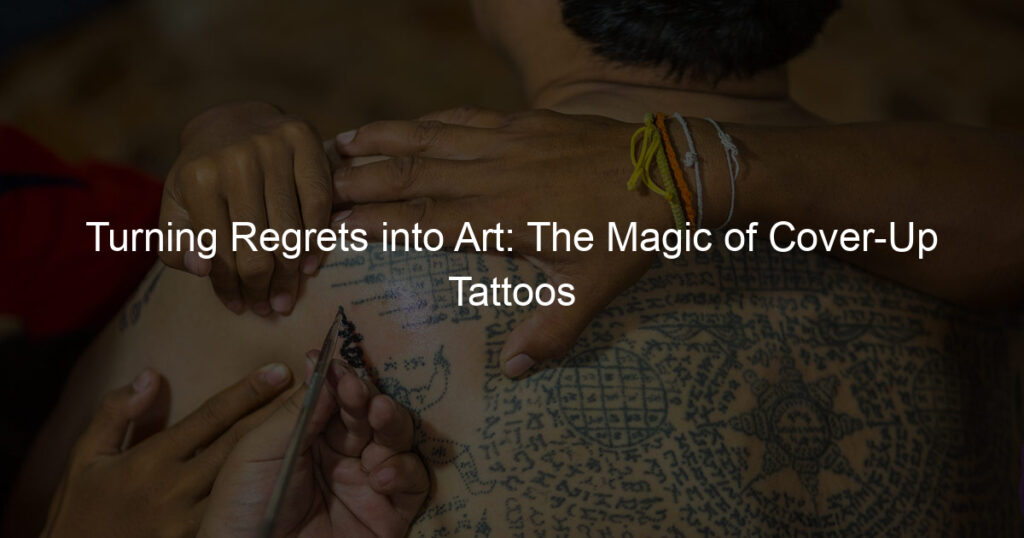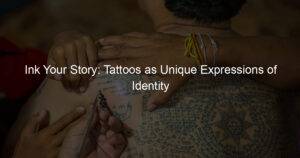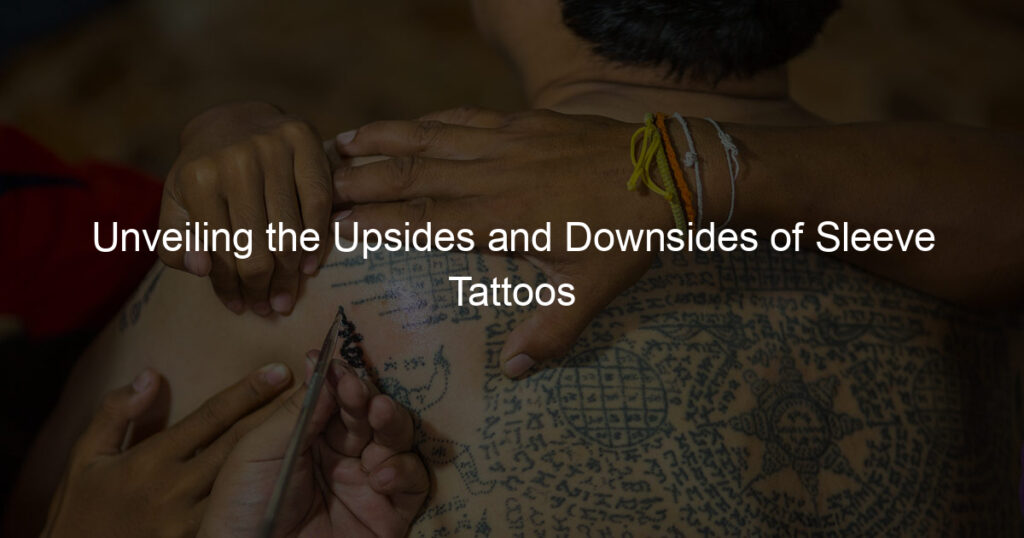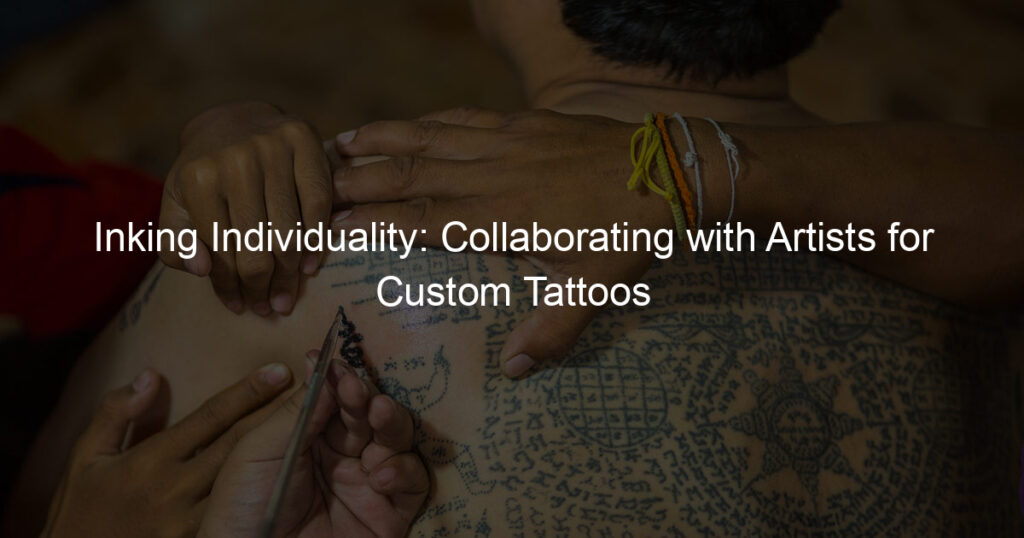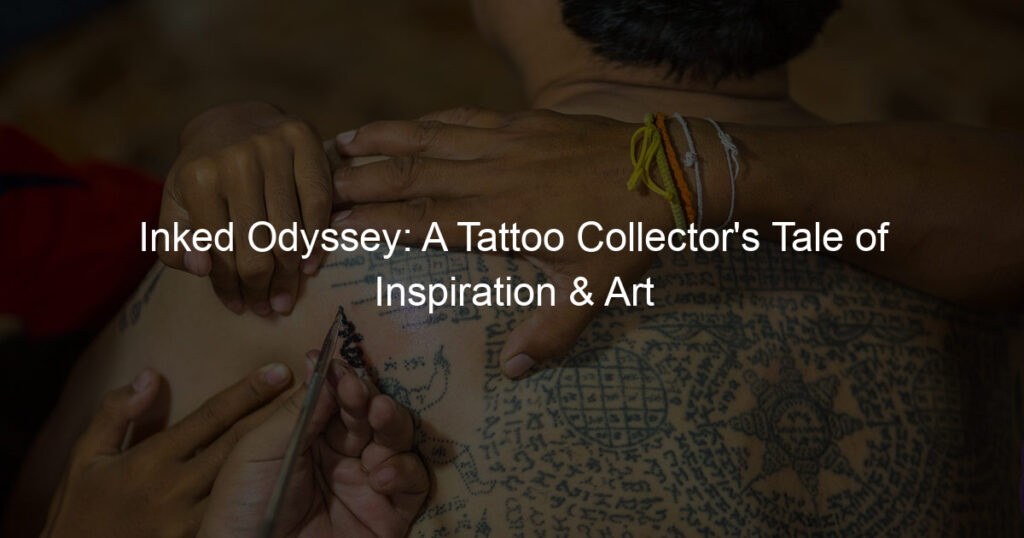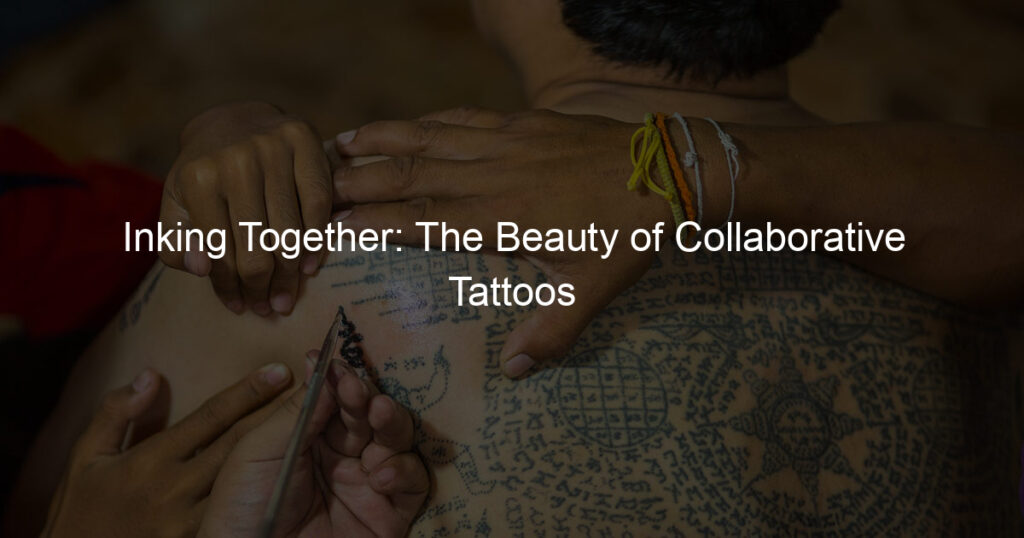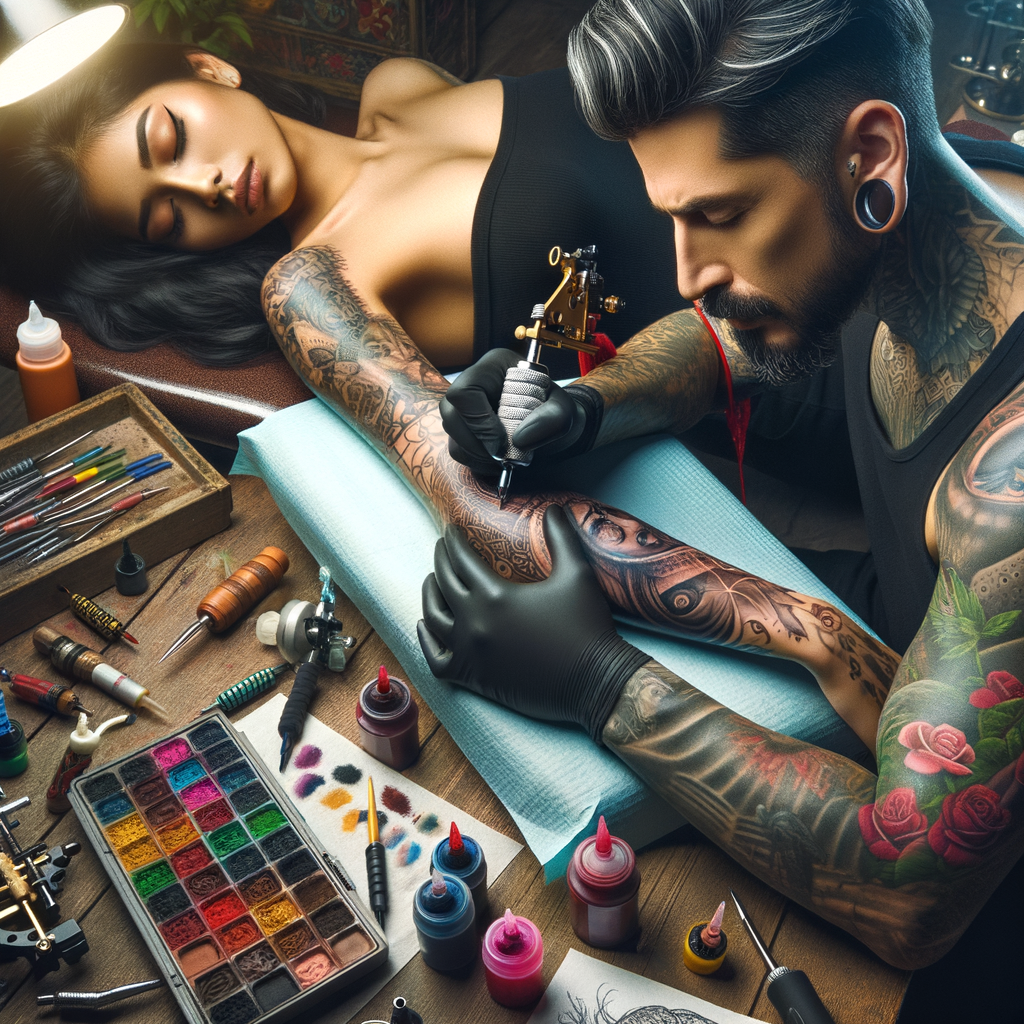
Introduction to Cover-Up Tattoos
Have you ever wished you could change a tattoo you got in the past? Maybe it no longer represents who you are, or perhaps it wasn’t done well. If so, you’re not alone. Many people are turning to cover-up tattoos to transform their old ink into something new and exciting. In this article, we’ll explore the concept of cover-up tattoos and how they’ve evolved over time.
A cover-up tattoo is a new design that is inked over an existing tattoo. The goal is to completely hide the old tattoo with a new piece of art. This is often done when someone regrets their old tattoo or wants to update it to better reflect their current style or personality. It’s a way of giving your skin a second chance, without having to go through the painful and costly process of tattoo removal.
Cover-up tattoos have been around for as long as tattoos themselves. In the past, they were often simple designs used to hide mistakes or poorly done tattoos. However, with advancements in tattooing techniques and equipment, cover-up tattoos have become much more sophisticated.
Today, skilled tattoo artists can create intricate designs that not only cover the old tattoo but also incorporate elements of it into the new design. This allows for a seamless transformation, turning what was once a regret into a piece of art that the wearer can be proud of. It’s a testament to how far the art of tattooing has come and how it continues to evolve.
In the following sections, we’ll delve deeper into the art of tattoo cover-up, explore different techniques used by artists, and provide examples of successful cover-ups. Whether you’re considering a cover-up tattoo or just curious about the process, we hope this article will provide you with valuable insights.
The Art of Tattoo Cover-Up
One of the most fascinating aspects of tattoo artistry is the ability to transform an existing tattoo into a brand new piece of art. This process, known as tattoo cover-up, is a testament to the creativity and skill of tattoo artists.
Tattoo Transformation: A Creative Process
Transforming a tattoo is not just about hiding the old one; it’s about creating a new piece of art that the wearer can be proud of. Let’s delve into the process and look at some successful transformations.
-
- How Tattoo Transformation Works
Tattoo transformation begins with a consultation between the artist and the client. The artist assesses the existing tattoo, considering its size, color, and location. They then discuss design options that can effectively cover the old tattoo while also meeting the client’s aesthetic preferences.
Once a design is agreed upon, the artist carefully works on the old tattoo, using the existing lines and colors as part of the new design. The process requires a deep understanding of color theory, as the artist must know how to mix and layer inks to effectively cover the old tattoo.
-
- Examples of Successful Tattoo Transformations
There are countless examples of successful tattoo transformations. For instance, a faded and outdated tribal tattoo can be transformed into a vibrant and detailed nature scene. Or, a name tattoo from a past relationship can be covered with a beautiful floral design.
One notable case is of a woman who had a large, dark butterfly tattoo on her back. She was unhappy with the design and wanted something more personal and meaningful. A skilled artist transformed the butterfly into a stunning landscape scene, with mountains, trees, and a sunset. The dark parts of the butterfly became the silhouette of the mountains, and the transformation was so seamless that one would never guess there was an old tattoo underneath.
These transformations are not just about changing the appearance of a tattoo, but also about helping individuals express their identity and personal story in a way that they feel proud of.
Correcting Tattoo Mistakes: It’s Possible
Everyone makes mistakes, and sometimes those mistakes are in ink. But don’t worry, even if you’ve made a tattoo mistake, there’s hope. Let’s explore some common tattoo mistakes and how they can be corrected with cover-up tattoos.
-
- Common Tattoo Mistakes
There are several types of tattoo mistakes that people commonly make. Here are a few examples:
-
-
- Misspelled words: It’s surprisingly common for people to get tattoos with misspelled words. Always double-check the spelling before getting inked!
- Incorrect symbols: Sometimes, people get tattoos of symbols or characters from other languages without fully understanding their meaning.
- Poor quality artwork: Not all tattoo artists are created equal. Some people end up with tattoos that simply don’t look good.
- Impulsive decisions: Tattoos that are chosen on a whim or under the influence can often lead to regret later.
-
These mistakes can be embarrassing and frustrating, but they’re not the end of the world. In fact, they can be corrected with cover-up tattoos.
-
- How these mistakes can be corrected with Cover-Up Tattoos
Cover-up tattoos are a special kind of tattoo that’s designed to go over a mistake or an old tattoo that you no longer want. Here’s how they work:
-
-
- Design: The first step is to come up with a new design that can effectively cover the old tattoo. This usually involves using darker colors and larger designs.
- Inking: Once the design is ready, the tattoo artist will carefully ink it over the old tattoo. This requires a lot of skill and precision.
- Healing: After the tattoo is done, it needs time to heal. Proper aftercare is crucial to ensure the success of a cover-up tattoo.
-
With a cover-up tattoo, you can turn your tattoo mistake into a piece of art that you’re proud to show off. Remember, it’s always possible to correct a tattoo mistake. You just need the right artist and the right design.
Tattoo Redesign: Giving Your Tattoo a Second Chance
Everyone deserves a second chance, and so does your tattoo. Tattoo redesign is a growing trend in the tattoo industry, giving individuals the opportunity to breathe new life into their old tattoos. Whether it’s a change in personal taste, a poorly executed tattoo, or a faded design, there are numerous reasons why people opt for tattoo redesign. Let’s explore some of these reasons and look at a few case studies of successful tattoo redesigns.
-
- Why people opt for Tattoo Redesign
One of the primary reasons people opt for tattoo redesign is dissatisfaction with their current tattoo. This could be due to a change in personal taste over time, or a tattoo that didn’t turn out as expected. A poorly executed tattoo can be a constant source of disappointment and embarrassment. Tattoo redesign offers a solution to this problem, allowing individuals to transform their regrettable tattoos into works of art they can be proud of.
Another common reason for tattoo redesign is the natural aging process of tattoos. Over time, tattoos can fade and lose their sharpness, making the design less attractive. A tattoo redesign can restore the vibrancy and detail of the original tattoo, giving it a fresh and updated look.
-
- Case studies of successful Tattoo Redesigns
There are countless success stories of tattoo redesigns, where individuals have transformed their old, regrettable tattoos into stunning new designs. Let’s take a look at a couple of these case studies.
Case Study 1: A woman had a small, faded butterfly tattoo on her shoulder that she was unhappy with. She opted for a tattoo redesign, transforming the butterfly into a vibrant, detailed flower. The redesigned tattoo not only covered the old design but also added depth and detail, making it a unique piece of art.
Case Study 2: A man had a poorly executed tribal tattoo on his arm. He chose to have it redesigned into a detailed, realistic lion. The redesigned tattoo not only covered the old design but also added a level of realism and detail that was not present in the original tattoo. The man was thrilled with the result, stating that he finally felt proud to show off his tattoo.
In conclusion, tattoo redesign offers a second chance for your tattoo, allowing you to transform an old or regrettable design into something you can be proud of. Whether you’re dealing with a faded tattoo, a change in personal taste, or a poorly executed design, tattoo redesign could be the solution you’re looking for.
Tattoo Cover-Up Techniques: A Detailed Look
Have you ever wished you could change a tattoo you have? Maybe it’s an old design that doesn’t represent you anymore, or perhaps it’s a tattoo that didn’t turn out as you expected. Whatever the reason, tattoo cover-up techniques can help. Let’s dive into understanding these techniques.
Understanding Tattoo Cover-Up Techniques
Tattoo cover-ups are a form of tattoo modification that allows you to change the design, hide, or enhance an existing tattoo. There are various techniques used in the process, and choosing the right one depends on factors like the size, color, and location of your existing tattoo.
-
- Various techniques used in Tattoo Cover-Up
There are several tattoo cover-up techniques that artists use. Here are a few:
-
-
- Ink Over: This is the most common technique where the artist uses darker ink to cover the old tattoo.
- Design Modification: In this technique, the artist modifies the existing design to create a new one.
- Tattoo Removal and Redo: This involves partial or complete removal of the old tattoo before getting a new one.
- How to choose the right technique for your tattoo
-
Choosing the right technique for your tattoo cover-up depends on several factors. Here are a few things to consider:
-
- Size of the Tattoo: Larger tattoos may require more complex techniques, like removal and redo.
- Color of the Tattoo: Darker tattoos may need a technique that uses darker ink, like ink over.
- Location of the Tattoo: The location of your tattoo can also influence the technique. For example, tattoos on sensitive areas might require more delicate techniques.
In conclusion, tattoo cover-ups can give your old or unwanted tattoos a fresh look. It’s important to consult with a professional tattoo artist to understand which technique would work best for your specific tattoo. Remember, every tattoo tells a story, and it’s never too late to change the narrative.
Tattoo Modification: Changing the Narrative
When it comes to tattoos, they are much more than just ink on skin. They tell stories, express emotions, and represent identities. But what happens when the narrative changes? This is where tattoo modification comes into play. It allows individuals to alter the meaning of their tattoos, giving them a chance to rewrite their stories.
-
- How Tattoo Modification can change the meaning of a tattoo
Tattoo modification is an art form that involves altering the existing design of a tattoo to change its meaning. This could be done for a variety of reasons such as a change in personal beliefs, a desire to update an outdated design, or to cover up a tattoo that no longer holds significance. The process involves using creative techniques to incorporate new elements into the existing design, effectively changing its narrative. For instance, a tattoo of a bird in a cage could be modified to show the bird flying free, symbolizing liberation and new beginnings.
-
- Examples of Tattoo Modifications that changed the narrative
Let’s take a look at some real-life examples of how tattoo modifications have changed the narrative:
| Original Tattoo | Modification | New Narrative |
|---|---|---|
| Name of an ex-partner | Transformed into a beautiful rose | Moving on from past relationships and embracing self-love |
| A simple, outdated tribal design | Enhanced with vibrant colors and intricate patterns | Evolution and personal growth |
| A small, faded butterfly | Expanded into a larger, more detailed butterfly | Transformation and rebirth |
These examples show how tattoo modification can breathe new life into old tattoos, allowing individuals to continue their stories in a way that aligns with their current selves.
In conclusion, tattoo modification is a powerful tool that allows individuals to change the narrative of their tattoos. Whether it’s to cover up a past mistake or to reflect personal growth, the possibilities are endless. Remember, your tattoo is a part of your story, and you have the power to change it as you evolve.
Tattoo Mistake Solutions: Turning Regrets into Art
Everyone makes mistakes, and sometimes those mistakes are in the form of tattoos. Whether it’s a design you’ve outgrown, a poorly executed tattoo, or a name you’d rather forget, tattoo mistakes can be a source of regret. But don’t despair, there are solutions available that can turn your tattoo regrets into beautiful works of art.
-
- How Tattoo Mistake Solutions work
Tattoo mistake solutions typically involve either tattoo removal or a cover-up tattoo. Tattoo removal uses laser technology to break down the tattoo ink, allowing your body to gradually eliminate it. This process can take several sessions and may not completely remove the tattoo, depending on the colors and depth of the ink.
A more creative solution is a cover-up tattoo. This involves working with a skilled tattoo artist to design a new tattoo that can incorporate and disguise the old one. The success of a cover-up depends on the size, color, and location of the original tattoo, as well as the skill and creativity of the tattoo artist.
-
- Key takeaways for those considering Tattoo Mistake Solutions
If you’re considering a tattoo mistake solution, here are some key points to keep in mind:
| Consideration | Advice |
|---|---|
| Patience | Both tattoo removal and cover-ups take time. Be prepared for multiple sessions and a gradual process. |
| Cost | Tattoo mistake solutions can be costly. Make sure to budget for the entire process, not just the initial session. |
| Research | Choose your tattoo artist or removal specialist carefully. Look at their portfolio, read reviews, and make sure you feel comfortable with them. |
| Expectations | Be realistic about what can be achieved. Some tattoos may not be completely removable or coverable. Discuss your expectations with your artist or specialist. |
In conclusion, tattoo mistakes don’t have to be a permanent source of regret. With patience, research, and realistic expectations, you can turn your tattoo regret into a work of art that you’ll be proud to show off.
Tattoo Revisions: Making Your Tattoo Better
Every tattoo has a story. But sometimes, the story changes, and so should the tattoo. Tattoo revisions offer a chance to transform an old tattoo into something new and improved. Whether it’s a change in personal taste, a desire to cover up a past mistake, or simply wanting to breathe new life into an old design, tattoo revisions can make your tattoo better.
Tattooing Over Old Tattoos: A New Beginning
One of the most common forms of tattoo revisions is tattooing over old tattoos. This process involves creating a new design that incorporates or completely covers the old one. But why do people choose to go down this path? Let’s explore.
-
- Why people choose to tattoo over old tattoos
There are many reasons why someone might choose to tattoo over an old tattoo. Some people may have outgrown the design or meaning of their original tattoo. Others may want to cover up a tattoo that was poorly done or has faded over time. And for some, a tattoo may serve as a painful reminder of a past they’d rather forget. Tattooing over an old tattoo allows them to reclaim that part of their body and start fresh.
-
- Case studies of successful tattooing over old tattoos
Many people have successfully transformed their old tattoos into new works of art. For instance, one woman had a small, faded butterfly tattoo on her shoulder. She worked with a talented tattoo artist who was able to incorporate the old butterfly into a larger, more detailed floral design. The result was a stunning new tattoo that she was proud to show off.
Another case involved a man who had a poorly done tribal tattoo on his arm. He decided to cover it up with a new design featuring a majestic lion. The artist used the dark lines of the old tattoo to create the mane of the lion, effectively hiding the old tattoo while creating a powerful new image.
These are just a few examples of how tattoo revisions can breathe new life into old tattoos. Whether you’re unhappy with your current tattoo or just ready for a change, consider a tattoo revision. It could be the start of a beautiful new chapter in your tattoo story.

